Ficus Audrey
Ficus Audrey, scientifically known as Ficus benghalensis, is a beautiful and majestic houseplant with large, glossy leaves and a strong presence.
Introduction to Ficus Audrey:
Discover the fascinating characteristics and origins of the Ficus Audrey, understanding its botanical features, growth habits, and the unique qualities that set it apart from other Ficus species. Uncover the symbolism and cultural significance associated with this majestic houseplant.
Growing Conditions:
Learn about the optimal growing conditions for the Ficus Audrey, including light requirements, temperature preferences, and soil considerations. Gain insights into providing adequate space for its expansive root system and tips for potting and container selection.
Watering and Humidity:
Master the art of watering the Ficus Audrey, understanding its moisture needs and the importance of maintaining proper hydration without overwatering. Explore the significance of humidity for this tropical plant and discover techniques to create an ideal microclimate.
Pruning and Maintenance:
Discover how to maintain the optimal shape and health of your Ficus Audrey through pruning techniques. Learn about controlling growth, managing size, and shaping the plant to suit your preferences while promoting healthy foliage development.
Propagation Methods:
Unlock the secrets of propagating the Ficus Audrey through stem cuttings, air layering, or other techniques. Gain step-by-step instructions for each method and expand your plant collection or share the beauty of the Ficus Audrey with others.
Pests and Diseases:
Identify common pests and diseases affecting the Ficus Audrey, such as scale insects, mealybugs, or leaf spots. Learn preventive measures and effective treatments to keep your plant healthy and thriving.
Indoor and Outdoor Uses:
Explore the versatility of the Ficus Audrey in both indoor and outdoor settings. Discover creative ways to incorporate it into your interior decor, as a focal point in your garden, or as an impressive shade tree for larger outdoor spaces.
Seasonal Care:
Navigate through seasonal care considerations for the Ficus Audrey, including adjustments in watering, fertilization, and light exposure during different times of the year. Understand how to protect your plant from temperature fluctuations and drafts.
Aesthetic Combinations:
Inspire your creativity by exploring companion plants that complement the Ficus Audrey. Discover suitable foliage plants, understory companions, or other houseplants that harmonize with its grandeur and enhance its visual appeal.
The Ficus Audrey will undoubtedly become a captivating centrepiece in your home or garden. Embrace the elegance and grandeur of this majestic plant and witness its beauty flourish in your care.
Things to know about Ficus Audrey
Common (vernacular) Name
एन्थूरियम (Hindi), Anthurium, Flamingo Lily, Flamingo Flower, Painter's Palette, Lace Leaf, Pigtail Plants, Tail Flower and many more.
Botanical Name
Anthurium Andraeanum
Origin
Mexico to Tropical America (Colombia, Ecuador).
Family
Araceae
Plant Type
Tropical plant
Plant Features
Ornamental / Evergreen / Exotic
Life Cycle
Perennial
Landscape Uses
Container Planting and Houseplants.
Species
Belolonchium, Calomystrium, Cardiolonchium, Chamaerepium, Cordatopunctatum, Dactylophyllium, Decurrentia, Digitinervium, Gymnopodium, Leptanthurium, Pachyneurium, Polyphyllium, Polyneurium, Porphyrochitonium, Schizoplacium, Semaeophyllium, Tetraspermium, Urospadix, Xialophyllium.
Varieties
It comes with thousand of different varieties in a diversity of leaf and flower colorations.
Size
Height : 1 to 1.5 feet tall and Width : 1 feet wide when mature.
Indoors or Outdoors
Outdoors : Anthurium can be used outdoors in shady plantings, avoid direct sun light.
Indoors : Excellent plant grow in bright light or indirect light. Best indoor plants for beginners.
Blooming / Flowering
Blooming period is throughout the year.
Flower Colour
It’s come with a contrasting spadix Gold, Yellow, Orange, Pink, White, Green, Purple, Red, Burgundy, Multicolored and Variegated colours.
Lucky Plant
According to Feng Shui, It bring Good Luck in your relationships.
Lighting / Sun Exposure
Bright Indirect Sunlight.
Temperature
Grow best preferably warm temperature above 21°C and can be tolerate max temp. as high as 32°C.
Growth Rate
Anthurium is a slow to moderate growers plant.
Watering
Moderate watering, Mist or over head sprinkler to provide water and to improve relative humidity. Not tolerate overwatering it may cause root damage and yellowing of the leaves.
Fertilizer
Slow-release fertilizer, or a water-soluble liquid fertilizer once or twice in the growing season (Spring through Summer).
i.e. - Cow dung, DAP, Compost, NPK 30-10-10 fertilizer, liquid organic fertilizer etc.
Pruning
Pruning of Anthurium not much is needed. However, trimming away only discolored or dead leaves.
Propagation
Seeds : The best time to sow your Anthurium seeds is in the end of Winter / early Spring but it can't can give good result.
Stem Cuttings : The easier methods of propagation of Anthurium in water or in soil via stem cuttings, and can be done during the warm growing season.
Division : Division of Anthurium can be done in Rainy season, or better in February to March.
Dormancy Period
Month : November to February (winter season)
Shed their leaves and show poor growth, Watering minimally.
Avoid : Propagate, Fertilize and Repotting.
Container
Ceramic Pot, Plastic Pot, Terracotta or Clay Pot is preferred, which ensures good drainage as well as water holding capacity.
Soil Type
A well-drained Loam / Coarse potting soil is recommended as well as water holding capacity. Prevent soggy potting medium.
Our recommendation for potting mix : Equal part mixture of Garden Soil (25%) + Compost (25%) + River Sand (25%) + Cocopeat (25%). You can substitute pieces of Charcoal, Vermicompost, Perlite etc.
Soil pH
Lightly Acidic soil - Ideally 5.5 to 6.5 pH (potential of hydrogen) is recommended for Anthurium.
Repotting
It is advisable to repot the Anthurium every year or two preferably spring to midsummer season.
Maintenance
Low maintenance and easy to grow.
Properties
Toxic or Poisonous to both humans and pets upon ingestion.
Benefits
Excellent indoor air purifier, Anthurium plants turns CO2 into oxygen. It purifies indoor air by removing harmful chemicals like ammonia, toluene, xylene and formaldehyde.
Special Features
Doesn't attract hummingbirds and pollinators like butterflies and bees or wasps.
Infestation / Pests
Aphids, Scale insects, Thrips, Mealy bugs, Spider mites and caterpillars etc.
Diseases / Problem
Physiological Problem : Anthracnose, Leaf Spot and Powdery Mildew.
Bacterial Problem : Bacterial Blight, Bacterial Wilt and Black Nose Disease.
Fungal Problems : Root Rot and Water Mold.
Some Glimpse of Ficus Audrey

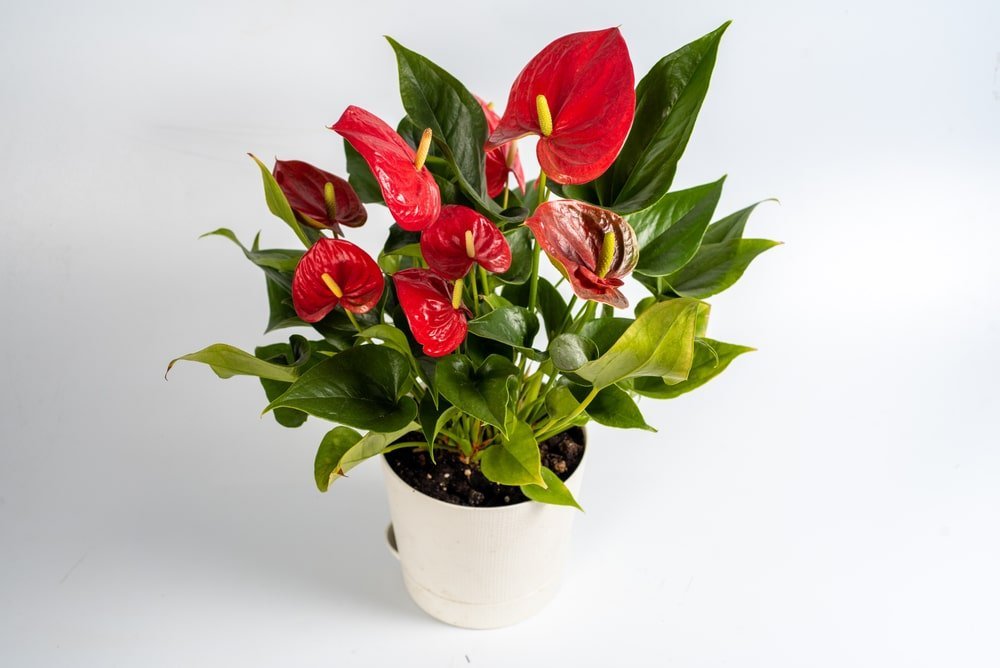
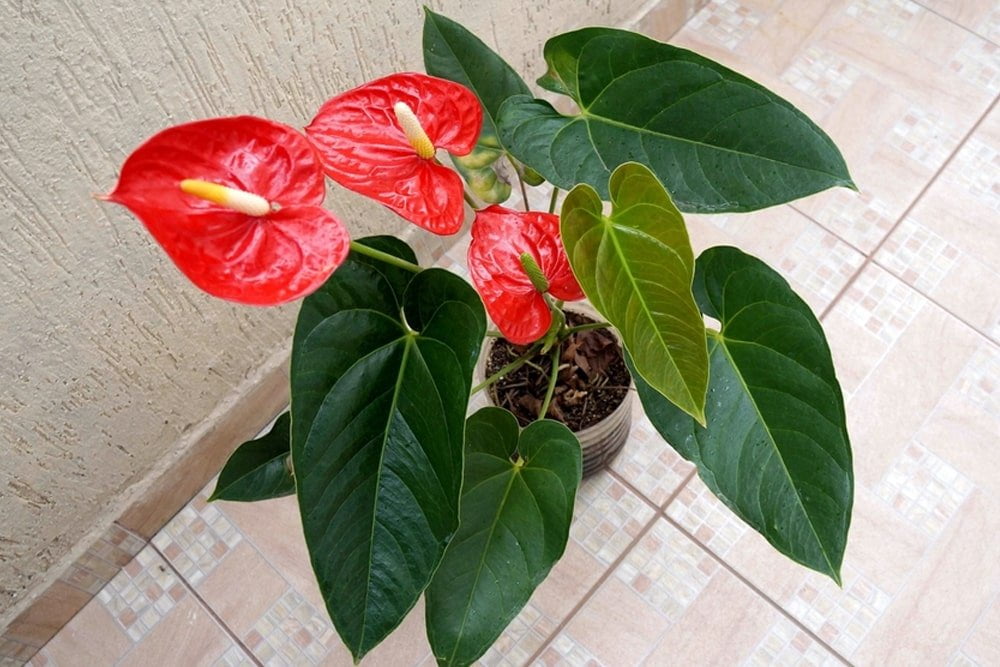


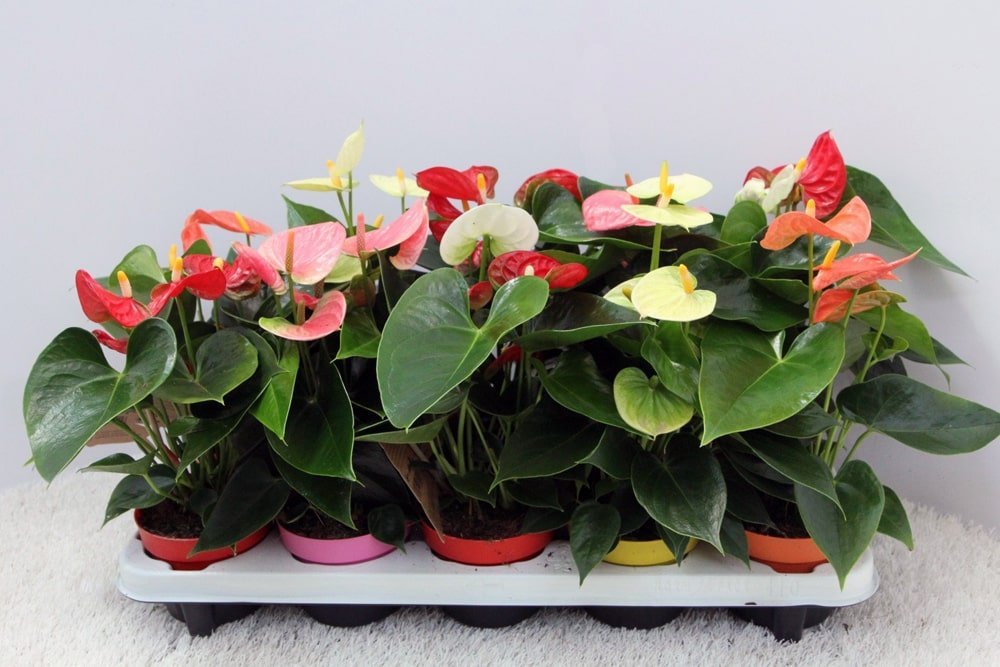


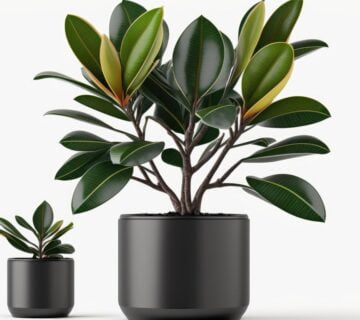

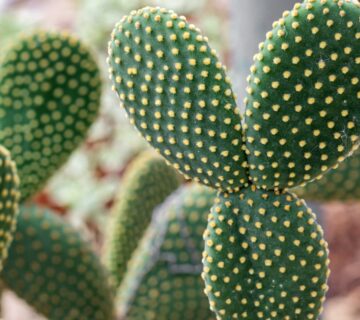
No comment